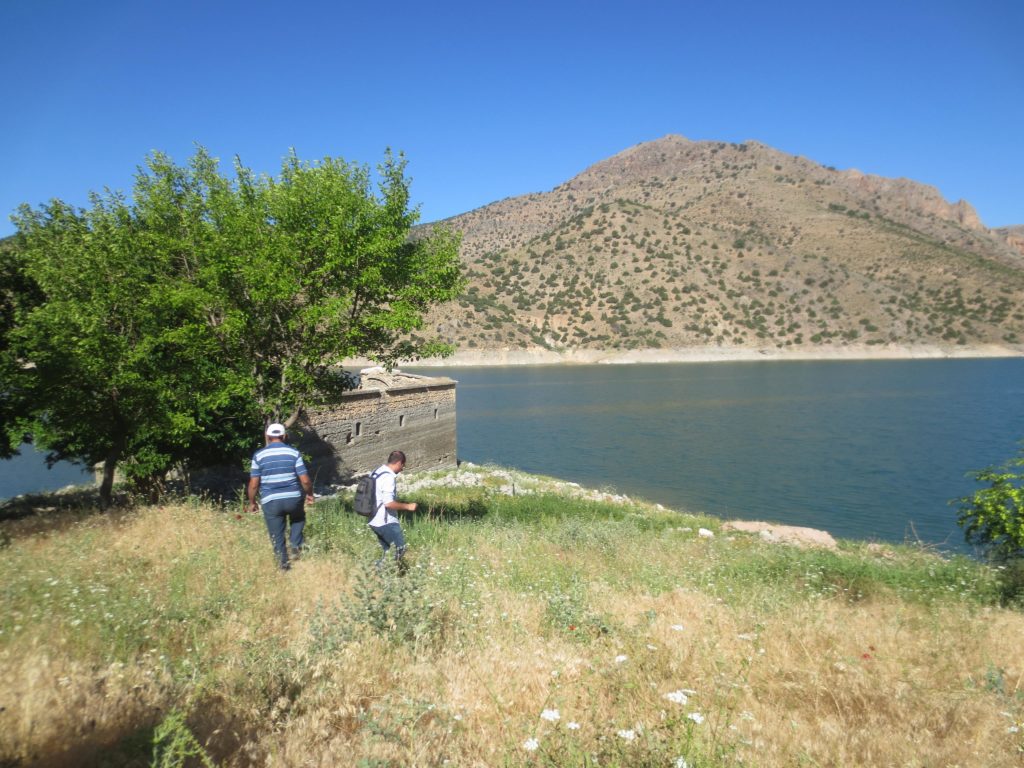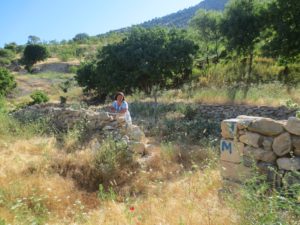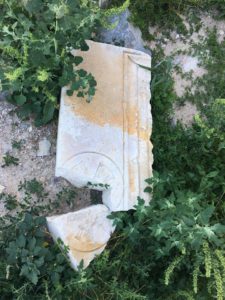After two failed attempts to travel to my paternal family’s village Miadoun in 2008 and 2013, a third opportunity arose when Khatchig Mouradian asked me if I wanted to join his group on a research trip in 2017. This time, I was only given two days to decide…

A nine year research project into the history of the Boghikian family, in which I engulfed myself, digging into scores of resources I never knew existed, and countless emails with George Aghjayan trying to pinpoint the location, would finally culminate in a journey with boots on the ground. I should mention, past, failed attempts were due to difficult access and the possibility of the village being under the reservoir created by the Keban dam built in 1974.
Just a few weeks later, we found ourselves in the most militarized city in Turkey, Diyarbakir (Dikranagerd), having coffee with an incredible group of local Armenians, chatting and singing Armenian songs. With full hearts and tearful eyes, it was surreal to say the least. If one word could have described that evening, it would be “longing”— longing for each other between those who survived on the outside and those who survived on the inside, and longing to be whole, to be one, to be reunited.
And like a flash, the evening ended. Forever engraved in my memory are the words of my new friend, Dara: “Don’t forget us.” Those words carried the 100-year-old hopes and dreams of thousands of Armenians who survived in the eastern provinces.

After days of traveling to the most remote Armenian villages and monasteries, the long anticipated day came; we were going to Chmshgadzak. Sitting around a table along the Taghar River with the village mayor, I asked if he knew of a village on the Euphrates by the name of Miadoun or Gemici, its Turkish name. He knew exactly and even informed us that the church and fountain are still intact. This was the first confirmation that the village was not submerged under the Keban Dam reservoir. Naturally, it was difficult to contain my emotions after years of uncertainty.
Traveling there by land would be challenging without roads, and the terrain was mountainous. The mayor arranged for us to meet the Mayor of Aghun [Ağın], who could give us access to cross over to Miadoun via water. By the time we met the Mayor of Aghun, it was too late in the day. We had two choices: either abandon the plan or go early the next morning. I couldn’t bear to accept defeat again, especially having come so close. By now, Khatchig too had invested much time and energy and was excited by the opportunity to find this village that had been lost to time—a village we could put back on the map and document its long forgotten church, Sourp Asdvadzadzin. With the help of three mayors, a local scholar, a boat captain, a fisherman guide, and an Armenian driver from Kharpert, we headed out for Miadoun at 5 a.m. the following morning.
A clear blue sky set against beautiful mountain ranges on a peaceful morning was the backdrop of our boat ride to the village of Miadoun—the village founded by my forefathers in 1460, per the family’s history. I could recognize the curvatures of the land from the many maps I had studied. Getting close to our village, the fisherman pointed out to us the village of Singah [Shngakh], which had partially emerged from the lake since water levels had dropped. Not much could be seen, other than crumbled white stones that were at one time part of a wall or building. This discovery was very exciting for me, wondering for years if the fate of Miadoun was the same. Soon, the fisherman—a man of few words and even fewer expressions—informed us that the church was straight ahead once we passed the ravine in from of us.

And just like that, I found myself gazing at Miadoun’s Sourp Asdvadzadzin church, built in 1842. Fighting back tears of disbelief, I saw that the church stood strong, with all four walls intact. The changing water levels had left their marks through the ages, yet it stood proud—even without its roof.
We docked approximately five meters from the church, confirming that much of the village was submerged. Hovhannes Ajemian had described in his unpublished manuscript that the church was situation high on a rock formation, as though “governing and guarding the village.” With each step I took, in my mind, I was walking where my great grandfather, Sarkish Boghikian (later Der Khatchadour) and my grandfather, Dickran Boghikian must have walked a thousand times. Immediately, I noticed the dug up corner of the church exterior. Our church was no exception to what we witnessed at all the churches in Western Armenia: Vandalism. I was happy; it was only one corner.
Entering the church, we were humbled by its massive size, especially for a small village, which had 85 households in 1895. I searched for any possible writing or carvings. Finding crosses on both sides of each of the three altars and a slab of stone with a carved out cross, I photographed everything, every inch, as a way to safeguard them—safe from further desecration. On higher ground, past the church, we walked up to a structure, most likely a house with all four walls, a doorway, and no roof: a home from the Karajents (Karajian) neighborhood.

Further away, there was a house with a blue tarp covering for a roof. We were told a single shepherd lives there, but we did not see anyone. I would have had many questions for him. Quickly, I made my way back down and ate from the same mulberry tree behind the church, from which my grandfather would have enjoyed fruit.
I hurried back to write my name in Armenian on the exterior wall of
the church. This was my defiant way of reclaiming what is rightfully mine, at least in my rebellious mind.
The vast, open scenery consumed me. This was paradise. Surrounded by mountains, crystal, blue water, the church with its mulberry tree… I wallowed in the serenity of that peaceful landscape. I imagined the Vardavar festivities that took place there under tents, with special food preparations, music, games, and competitions with the Arapgirtsis across the river, described by my great grandfather in his book Dzari Aghchiguh («Ծառի աղջիկը», The Girl of the Tree), published in 1899—all lost to the violent winds of the Hamidian massacres when most of the residents fled, never to return.

In May of this year, a friend who is originally from Dersim, sent me a video of Miadoun, which he found on the internet, posted eight months after our trip. It was a short clip of young treasure hunters announcing, “Another discovery of an Armenian church, keep looking.”
The Armenian Genocide has not ended…it is a continuing crime with each new desecration of our heritage and our culture.
After exploring Miadoun for less than half an hour, we were back on our diesel-perfumed, rust-patched motorboat for our three hour return trip to Kharpert.
I rushed to the boat to stay on schedule after I picked a few red poppies to take with me as mementos.
But then I hurried back to write my name in Armenian on the exterior wall of the church. This was my defiant way of reclaiming what is rightfully mine, at least in my rebellious mind.



Thank you for all the hard work you have accomplished.
Beautiful, Ani.
The longing, the mulberries.
So moving.
Janet Gedigian
(AGFG)
Very interesting, Ani. I’m glad you found what you were looking for… And that you added your “graffiti.”
Please forward this email to Ani Boghikian Kasparian.
Dear Ani I was born in Cairo Egypt.
I was told by my father Michael Torikian and Boghikians that we are cousins from Miadoun. They added. there were 5 families with the names, Torikian, Boghikian, Soghikian, Norikian, Shoghikian that were born from one father (sorry no first name) who was a fisherman from Miadoun. (Miadountsis)
So wish I had the luck to visit Miadoun and see my ancestral land